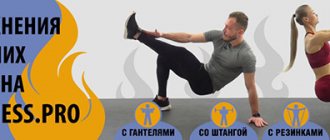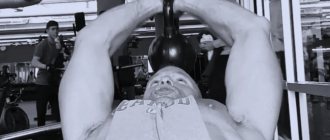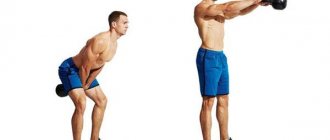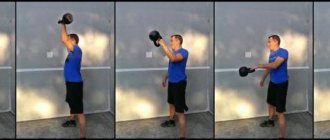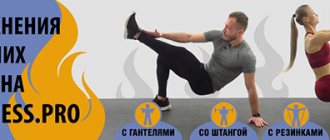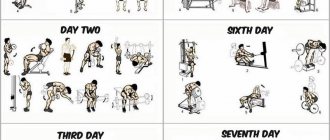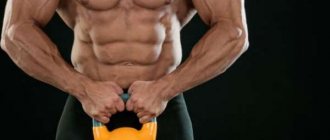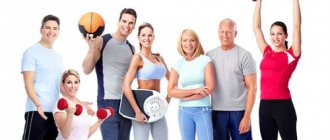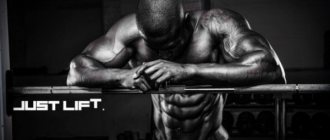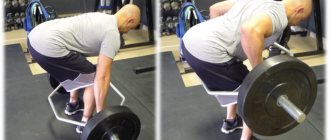Some important tips
Performing a deadlift safely and technically depends not only on your strength and fitness, but also on some important nuances described below.
Take off your shoes
Most lower body movements will benefit from lifting shoes, but in deadlifts it is counterproductive - not only will it increase lift, but it will also tilt you slightly forward, disrupting the proper movement. For best results, wear flat shoes, or remain in socks or bare feet. This will give you a stable platform to climb from.
Take care of your shins
The further the bar is from your body, the harder it is to hold it - there's a reason world champion Eddie Hall ends every set with bleeding shins. Begin your lift with your toes under the bar and your shins behind it, then begin to lift. You may want to invest in a long pair of socks.
Use a belt
You can instantly add about 12kg to your deadlift simply by wearing a weight belt. Breathing into your belly and pressing into your waistband with your abs will increase intra-abdominal pressure, creating a more stable core needed when lifting heavier weights.
Correct grip
No matter how much you strengthen your back and legs, you won't be able to lift heavy weights if your arms can't hold the barbell. To create a strong grip, try using chalk and practicing a strong grip (squeezing any barbell with your hands as tightly as you can) to make your grip more secure.
Basic leg exercises
Let's first talk about basic leg exercises. After all, many ignore this muscle group, but in vain.
Squats
Barbell squats are one of the fundamental exercises in many sports. In this movement, almost all muscle groups of your body work in one way or another. The main dynamic load falls on the quadriceps, hamstrings, spinal extensors, gluteal muscles and hip adductors. When working with serious weight, a significant static load falls on the abdominal muscles, shoulders and trapezius muscles.
Vitaly Sova — stock.adobe.com
A clear position of the head helps stabilize the movement - the gaze should be directed strictly in front of you or slightly upward, this will make it psychologically easier for you to get up from a lower position.
Don't forget about the position of your feet - in general, they should be placed slightly wider than your shoulders, with your toes pointing to the sides. When rising from a squat, never bring your knees together.
This also includes squats in Smith and hack machine. These movements are a little simpler in terms of technique. The general principle is the same, but the position of the body and the projectile is more fixed, which is why fewer stabilizer muscles are involved in the work.
mountaira - stock.adobe.com
Leg press
The platform leg press cannot fully replace heavy squats with a barbell, but the load on the legs is no less: the front, back and inner thighs and gluteal muscles work. Perfect for beginners for whom the squat technique will be too difficult at the initial stage.
The most important thing in this exercise is not to overdo it with the working weight. This will make it more difficult for you to control the correct position of your knees. If you bring them inside the trajectory of movement, you risk injury to the ligaments.
It is also important to work in a comfortable amplitude. Do not try to lower the platform as low as possible. The geometry of most exercise machines is designed in such a way that at the lowest point your spine will be rounded in the coccyx area
This is an extremely traumatic position. At the top point, you don’t need to straighten your knees all the way, leave them slightly bent
The geometry of most exercise machines is designed in such a way that at the lowest point your spine will be rounded in the tailbone area. This is an extremely traumatic position. At the top point, you don’t need to straighten your knees all the way, leave them slightly bent.
Lunges
You can perform lunges with your own weight, with a barbell or dumbbells. In any variation, you will use all areas of the leg muscles. Depending on the width of the step, the direction of movement and the position of the foot, you can slightly emphasize the load on one or another area: with a shorter step, the emphasis falls on the quadriceps, with a wide one, on the hamstrings.
If you perform a step in such a way that at the bottom point the angle between the shin and the thigh of both legs is 90 degrees, the load is equally distributed on the front and back surfaces of the thigh.
Sumo deadlift
This is a variation of the classic deadlift, in which the emphasis shifts to the legs (adductors, quadriceps and hamstrings) and works the back to a lesser extent. This is achieved through wider stance of the legs. The range of motion in a sumo stance is a little shorter, but this does not eliminate the powerful static tension in the abdominal muscles, back, trapezius and arms.
The correct technique for performing a sumo deadlift involves a deep squat in the starting position and maintaining a straight back throughout the entire exercise. This way you minimize the risk of back injury or umbilical hernia.
Athletes who are not involved in powerlifting should avoid using an underhand grip, as it can also lead to spinal injury. Use a regular overhand grip; you can attach straps if the weight is too heavy.
Romanian deadlift
It is often mistakenly called a deadlift, although in fact a deadlift is a regular classic deadlift. In the Romanian version, the legs remain slightly bent throughout the entire approach; the work is mainly carried out by the extensors of the spine and biceps of the thigh. That is why this exercise can be considered a basic one for the back. It’s also a good idea to include the gluteal and other additional stabilizers (trapezius, calf, etc.).
There is no need to perform this movement with fully straightened legs, as this can cause injury. The angle of the knees should not change throughout the entire approach. The bend should be done to a comfortable point, stretching is different for everyone, it should not be done through pain
It is also important not to hunch your back; if you can’t do this, reduce the working weight
Another version of this exercise is with dumbbells, the technique here is identical, but the emphasis shifts more to the gluteal muscles.
Recommendations for implementation
By following these recommendations, you will see and feel the results of the exercise faster.
- It is best to do 8-10 repetitions on each arm for the first three weeks of training, then move on to 10-15, the number of sets (approaches) 3-4 times.
- You need to introduce it into your training a little earlier than the middle of the complex for the latissimus dorsi muscles.
- Bodybuilding instructors recommend starting practice with a weaker arm for the harmonious development of your body.
- Perform at a slow pace, pausing at the end points for a few seconds, holding your breath, and up to 2 minutes between sets.
- Try to make your first effort powerful. Otherwise, you may not be able to raise your elbow higher than your shoulder, and therefore you will not achieve the full contraction of the back muscles involved in this exercise.
- While raising the working shoulder, do not lower the opposite one. Try to pull your shoulder higher while keeping your back motionless.
- If you cannot raise your elbow higher than your shoulder, it is better to take a dumbbell that is less heavy. Remember that the higher your elbow is above your shoulder, the more powerful your back muscles contract.
- Keep your body parallel to the floor, as rounding your back is dangerous.
- Try to pull the dumbbell using your shoulder and back muscles without straining your biceps.
- For convenience, alternate performing exercises with your leg on the floor or on a bench,
It’s quite easy to work different muscles in the waist row by simply changing the angle formed by the line of the body and the line of the shoulder. There are three main options:
- By moving the elbow away from the body a considerable distance, the athlete transfers the main load to the posterior bundle of the deltoid muscle.
- By pressing the elbow to the body, the athlete tightens the latissimus dorsi muscle more strongly.
- In the middle position, the teres major and rhomboid muscles will work.
It is equally important to point the dumbbell towards your waist, in the area between your waist and diaphragm. https://www.youtube.com/embed/n2tuBztj5tk
https://youtu.be/n2tuBztj5tk
Experienced trainers also recommend paying attention to some details:
- At the beginning of lifting your arm, apply more force - your goal is to lift the load as high as possible.
- Do not lower your free shoulder when lifting a load.
- If you can’t lift the dumbbell high, it means you took on too much weight.
- Don't forget to warm up before training. Muscles require pre-warming before starting to lift weights.
- Perform the exercise up to 20 times in 3-4 approaches. Rest 30–60 seconds between sets.
- Choose the right weight. The main condition is to perform the required number of repetitions technically correctly.
- Do not make sudden jerks.
- Fix the position of the body, do not turn in the lower back.
- Direct your gaze forward so that there is no temptation to lower your head and round your back. Also, the cause of a “round” back can be too much weight.
- Depending on the position, dumbbell rows can be performed standing or resting on a bench.
Today we will look at the second option.
Training complexes
The deadlift with a kettlebell is a universal exercise that can be used both in a preparatory scheme and in circuit training. But still, the best result is achieved if you combine it with other kettlebell exercises on the training day. Let's look at the basic complexes using deadlifts with kettlebells.
| Name of the complex | Incoming exercises | primary goal |
| Circular |
| Work your entire body in one workout. Universal – suitable for any type of athletes. |
| Home |
| Home option for working out the whole body in one workout |
| CrossFit Experience |
| Endurance training - the kettlebell is used as an alternative to a light barbell. |
| Kettlebell Marathon |
| Development of the forearms + working out the whole body with basic exercises |
The kettlebell deadlift, although not a required exercise in any of the CrossFit complexes, is an excellent alternative and a way to diversify the workout for many athletes. Perhaps its main advantage is the fact that it allows you to progress with relatively light weights.
Light weight also significantly reduces the risk of injury and the likelihood of microdislocation, since with a total maximum deadlift weight of 64 kilograms, the load on the lumbar region is somewhat less.
The only recommendation for athletes who want to achieve high performance in this exercise is to use a pump training mode with a high number of repetitions at high speed.
Author Yaroslav Khvatov
Training experience - more than 8 years. Winner and medalist of All-Russian powerlifting and deadlift tournaments. Candidate for Master of Sports in deadlift.
What weight should I use and what grip should I use?
Deadlifting with a kettlebell is easier than doing a deadlift with a barbell, but you still need to be careful when choosing the weight. For beginners, the maximum weight is 16 kg or two 8 kg weights. Athletes with experience rely on their working weight:
- from 110 kg - two weights of 24 kg;
- from 150 kg - so that each hand holds 32 kg.
If the working weight in the classic deadlift has not yet reached 60 kg, it is better not to include exercises with weights. Most likely, the muscle corset is not yet ready for such loads; it will not cope with stabilization, and the body will deviate in a stronger direction. This imbalance can lead to microluxation of the spinal disc.
Useful tips
The list below contains several useful recommendations that will help you learn to feel your muscles much better, work with heavy weights, and protect yourself from injury by performing the bent-over barbell row exercise.
- Control the position of your elbows while lifting the barbell. At the point of peak load they should be located above the level of the housing. This way, the latissimus dorsi muscles will receive the maximum amount of stimulation to grow.
- Maintain natural lordosis in the lumbar spine throughout the entire approach. Try to statically strain the extensors of the spine - when pulling the barbell to the belt, they serve as a kind of “airbag” that protects you from unwanted injuries.
- When performing bent-over barbell rows, always keep your knees slightly bent. This will take the stress off your hamstrings and hamstrings.
- Do not change the position of your neck or the direction of your gaze during the approach. If you start looking not in front of you, but at your feet, your lumbar spine will immediately become rounded.
- Do not twist your wrists when lifting the barbell. This reduces the range of motion and shifts the lion's share of the load to the muscles of the forearms.
- To alternate the load on different parts of the back muscles, change the angle of the torso and the grip width of the barbell.
Tips and tricks
They will help you work the target muscles better and master the exercise faster:
- Be sure to do a warm-up. If the muscles are poorly stretched and not warmed up, you can get injured. This will negatively affect the training process.
- Place your elbows as close to your torso as possible. This position will allow maximum use of the lats. And if the elbows are not located close to the torso, then the arms will work more than the lats.
- Change the angle of the body. Variety in training is a big plus that should not be neglected. Alternating between different positions will allow you to train better.
- Start the exercise with light weights. This will allow you to fully feel the range of motion and biomechanics.
- Vary your grip. This also makes adjustments to progress.
What are the mistakes?
They are present in absolutely any exercise, and in order to eliminate them, it is important to clearly monitor the execution technique. Let's look at what mistakes happen when bent over with dumbbells:
- Too much weight. Because of this, the movements are not smooth, but sharp. This can lead, at a minimum, to a violation of technique, and at a maximum to injury.
- Watch the range of motion. To do this, raise your elbows high enough. The full amplitude will allow you to maximally work the widest backs.
- Don't spread your arms out to the sides. Elbows must be strictly fixed in relation to the body. The movement should be according to the pattern: back and forth.
- Observe the technique and correct breathing. This will allow you to achieve the maximum effect from the exercise.
Exercise technique
The technique for performing the exercise looks like this:
- Place the weight on the floor in front of you. The arm of the kettlebell should be parallel to the body. Place your feet a little wider. How wide depends on your stretch, you should not feel any discomfort in your inner thigh.
- Keep your back as straight as possible, allowing only a slight tilt forward (literally 10-15 degrees). Without bending lower, squat down and grasp the handle of the weight with both hands. Use a closed grip.
- Working your leg muscles, stand up with the dumbbells. Keep your back straight throughout the entire lift. The movement should be as explosive and fast as possible to give the kettlebell good momentum. Then your shoulders won't tire from the pulls as quickly, and you'll be able to do more reps. The same operating principle applies when performing kettlebell swings with both hands in front of you.
- When you have already fully straightened and straightened your knees, the weight should “fly” up a little more by inertia. This is what you need to take advantage of. There is no need to pull it towards your chest, you just need to continue its movement. With your shoulders slightly tense and your elbows bent, pull the weight up to about chest level. The movement is performed in much the same way as a close-grip barbell row to the chin. To place more emphasis on the shoulders rather than the trapezius, move your elbows out to the sides as you lift. At the top point, the elbow should be located above the hand.
- After this we perform the next repetition. If you're doing a CrossFit routine where you need to do as many reps as possible for time, you'll want to place the kettlebell down as sharply as possible, with your back tilted downward. If not, do the same thing, only in reverse order.
https://youtu.be/EMhNlh5B4D4
One-Arm Kettlebell Row
This option is suitable for those athletes who do not have the opportunity to exercise with a dumbbell. The disadvantage of kettlebells is the lack of weight variation , that is, the athlete in most cases has the opportunity to work with weights of 8, 16, 24 and 32 kilograms. By the way, you can perform the exercise either on a bench or with emphasis on the thigh. Otherwise, the exercise is performed in exactly the same way as when rowing a dumbbell on a bench.
Proper Deadlift Technique
This traction option is not typical. It is rarely seen performed by athletes training in the gym. There are fitness centers where no one practices deadlifts of any variation. For those who make the classic version, which has already become familiar, making sumo will not be a problem.
https://youtu.be/t-Xpi65BO10
Something to remember
Changing the position of your feet changes the muscle groups involved
The unusual position requires caution when lifting weights. Those who are doing this version of the deadlift for the first time should not use the usual weight. It’s better to lighten the load to feel your own body’s reaction
It is better to lighten the load to feel the reaction of your own body.
Next, having unloaded the bar, they stand in front of the barbell. Feet are placed shoulder-width apart. This may cause some feeling of tightness and tightness in the inner thighs. Therefore, if you have not done a warm-up, it is better to warm up a little first. You can do several squats from this position. This engages those muscles that will be worked out in the future.
Performance
When the position is accepted, the warm-up is completed, proceed to the exercise:
- Take hold of the barbell, keeping your back straight and level. To grasp the bar, bend at the waist. The grip is similar to the classic version, when the hands are approximately the same width as the shoulders. There are no strict requirements for grip. A wide variety of variations can be used. It all depends on preference and your own convenience. Use an underhand grip, an overhand grip, or a different grip. Experimentation is acceptable.
- They lower, slightly bending the body. Since the legs are set wide, the thighs are almost parallel to the surface of the floor. It is imperative to ensure that your back is completely straight, your chest, like your gaze, is directed forward. Most of the weight lifted is in the back of the legs. Straighten with an explosive, sharp movement carried out by pushing off the legs. The bottom line is that the athlete only holds on to the bar, and the pushing of the projectile is carried out exclusively by the lower part of the body.
At the moment when the bar crosses the knees, the pelvis is pushed forward, the shoulder blades are brought together. Thanks to this movement, the shoulder girdle becomes more elastic. To increase the load and use the shoulders to the maximum, they linger at this point, keeping the shoulder blades retracted, and only then return to the starting position. You always need to control the position of your torso while lowering the projectile. When the bar is down again, it is raised and everything is repeated from the very beginning.
One-arm dumbbell row technique while resting on a bench
So let's look at the right side bent over row. First you need to take your starting position, standing to the left of the bench.
- The palm is turned towards the thigh.
- The torso should be tilted parallel to the bench, and the back should be slightly arched at the lower back.
- The hand with the dumbbell is perpendicular to the floor. The muscles are relaxed, the shoulder is slightly lowered and stretched as much as possible.
- After exhaling, tensing the latissimus muscle, the athlete pulls the dumbbell to the thigh as high as possible. The dumbbell should not rise above the level of your back.
- At the top point of the movement, the dumbbell should be held for a short time, and then the sports equipment should be returned to its original position while inhaling.
What muscles work in the sumo deadlift?
You should not give up traditional deadlifts. It is the best exercise aimed at working all the muscle groups of the back of the body. It is also impossible to remove the classic version completely and replace it with another variation. This also applies to sumo. It is best to include it additionally in the training program, since this deadlift also uses the muscles of the back of the body, but in a slightly different way, which leads to muscle tone.
The sumo deadlift targets the glutes and hamstrings. They receive much more load than with the classic performance of this exercise, that is, with a narrow position of the feet. This is especially true for tendons. At the same time, abductor muscle groups are also involved. In addition, the quadriceps also work. How much they are loaded depends on the width of the legs. At the same time, the forearms are also more tense, since the barbell is held with the hands.
Almost all spinal muscles are secondary muscles. At the top point, bringing the shoulder blades together, the athlete loads and, therefore, works the trapezius. The stabilizing muscles for this deadlift variation are the abdominals, rhomboids, and hip flexors.
Benefits of Exercise
Since two joints are involved in this exercise, the bent-over dumbbell row is considered a basic exercise or, as they say, a multi-joint exercise. The belt row is aimed at working several types of muscles at once; athletes perform it to increase muscle mass, the so-called pumping and, of course, to develop strength.
Among the advantages of bent-over rows is that you can do it without exercise equipment, using dumbbells and a bench (and there is an option in a half-squat with emphasis on one leg without an elevation)
It is only important to follow the basic rules and perform the exercise a sufficient number of times.
https://youtu.be/Ezr5tNL3AIY
In addition, you should evaluate other advantages:
- The bent over row is a strength exercise. This requires the athlete to have sufficient strength and endurance.
- The exercise allows you to form a V-shaped figure, but thanks to the inclination and support, it does not overload the area of lordosis.
- The ability to perform a wider range of motion compared to a similar movement with a barbell.
- Also, bending over with a barbell allows you to focus your efforts on the back muscles. And if an athlete feels that his muscles are not developed symmetrically, he can even out the disproportion by performing more exercises with one hand than the other.
- The waist row does not overstrain the wrists, so there is no risk of injury.
- The load on the spine is not as strong as when working with a barbell.
- Excellent load and safety at the same time. The exercise uses a huge muscle mass, but there is no load on the spine, as in the barbell row technique. This makes the practice suitable for those who have problems with the spine and lower back.
- A complex approach. In addition to directly affecting the back muscles, this technique helps strengthen the lower back, improve posture and help get rid of rounded shoulders.
- Relief back. Bent-over rows help you achieve a massive and beautiful V-shape of your back without the use of special machines.
- Possibility to do at home. The simplicity of sports equipment and the equipment itself allows you to do exercises at home. And if you haven’t gotten dumbbells yet, use plastic bottles filled with water or sand to start.
- posterior bundle of deltas;
- rhomboid muscles;
In addition, there are other reasons why many athletes prefer this exercise:
- No special equipment is required, so this exercise can be easily performed at home by replacing the dumbbell with a barrel of water.
- If you perform the bending exercise at different angles, you can work different areas of your back.
- Unlike the barbell row, in this exercise you can load one half of your back more. This situation is useful for those who have a pronounced asymmetry in the growth of the back muscles.
- Free weight exercises can be done by absolutely anyone, choosing the level of weight depending on your goals and fitness level.
- This exercise puts less stress on the lower back, so it is included in the training program for athletes with problems in the lower back.
There is another equally effective exercise aimed at training the back muscles. You can get acquainted with the technique of performing this exercise, as well as with all the nuances of training, in the article “Deadlift”.
Before analyzing the technique for performing dumbbell rows, it is worth familiarizing yourself with the recommendations for implementation, adhering to which, you will better master this exercise and minimize the risk of injury.
Deadlift Variations
Romanian deadlift
To begin the movement, stand with the barbell in your hands rather than on the floor and lower until you feel a gentle stretch in your hamstrings to build flexibility as well as strength, power, and control in these often-overlooked leg muscles. There is no need to lift a lot of weight for the Romanian deadlift to be effective, so start small.
Trap bar pull
You may also find this version labeled as a hex bar row, due to the hexagonal shape of the barbell used. This is an effective version of the classic row, with the handles on the side forcing you to retract your shoulder blades and engage your latissimus dorsi. It's great for quickly building back strength and doesn't put as much pressure on your lower back as other rowing options since gravity isn't pulling you forward.
Sumo deadlift
Place your feet wider and grip the barbell with a slightly narrower grip than you would with a regular deadlift. Use significantly lighter weights as this exercise targets the muscles in your hamstrings, making it a great builder for strong legs.
Wide grip deadlift
Grip the barbell with a wider grip to give more attention to your upper back (trapezius) muscles. Rise up slowly to avoid straining your back.
Rack deadlift
If you find that the range of motion of a conventional deadlift is too difficult for you, start by lifting the barbell from a block or rack. This is a good variation to start with until you become more confident with the movement because it reduces the stress on your lower back.
Deficient traction
To increase your range of motion and improve your ability to lift the bar off the floor, try an exaggerated row while standing on a block next to a barbell. Slowly rise to a stable position to maintain balance and avoid injury. Only move on to this exercise if you have mastered the regular deadlift.
Newbie mistakes
Incorrect execution technique leads not only to lack of results, but also to injuries. The most common mistakes made during training are:
- loss of balance. It occurs due to poor coordination of movements, as a result the projectile begins to deviate from the required vector of movement;
- sudden quick movements. Lead to stretching, all actions should be performed smoothly;
- rounding of the spine. At high weight it leads to injury;
- incorrect head position. It should be smooth, the gaze directed forward.
If one of these situations occurs while performing a deadlift with a kettlebell, the exercise must be stopped immediately:
- pain in the lower back or back. Deadlifts should be preceded by exercises to strengthen the lumbar region, pelvis and chest; they serve as a preparatory stage;
- discomfort in the knees. Pain or mild discomfort is a sign that training should be stopped immediately. If a crunching sensation appears, you should visit a doctor;
- dizziness, confusion. Indicate problems with blood vessels.
Benefits of exercise
Kettlebell swings with two hands are a useful multifunctional exercise that is simultaneously responsible for explosive leg strength, maintaining static tension in the core muscles, and developing strength endurance and grip strength. For these reasons, this exercise has gained enormous popularity not only in CrossFit and kettlebell lifting, but also in mixed martial arts, Brazilian jiu-jitsu, grappling and other types of martial arts. Some athletes who are interested in fitness and bodybuilding also include this exercise in their training program, which leads to increased strength in such common exercises as classic and front squats with a barbell, deadlifts, military presses, shrugs and others. Therefore, the benefits of kettlebell swings cannot be overestimated.
Variations of the exercise
You can perform a jerk in different ways:
Option 1. Experienced athletes with good physical training can do a more complicated snatch. when it is carried out without involving the legs, but solely by the strength of the back muscles. This becomes possible, for example, when sitting on a chair, which does not allow the use of the lower limbs.
Option 2. Involves using two shells at once. They can rise either simultaneously or in turn on each hand.
You should understand the difference between a jerk and a pull. The latter is not performed through inertia, which allows the weight to fly up, but is carried out through muscle effort. This is a completely different exercise.
Kettlebell Snatch - technique from the Guinness Book of Records record holder
Leg press options
There are three types of simulators for performing this exercise:
- at an angle;
- vertical;
- horizontal.
Angle press
The angled leg press machine is one of the most common machines in all fitness clubs in the world. During execution, the angle between the athlete’s torso and the platform is approximately 45 degrees. This allows you to work in a fairly large amplitude and use serious weight. The other two types of leg press machines have not yet received the widespread distribution they deserve in Russian gyms. It’s a pity, because with their help you can perfectly diversify the load and force the leg muscles to work at new angles, which will lead to even greater progress.
Vertical Leg Press
The beauty of the vertical leg press is that the vector of movement fundamentally changes. The knees do not fall towards the shoulders, but towards the stomach. Because of this, it is easier for us to focus on the work of the quadriceps, especially if we use a narrow parallel stance. It is not recommended to perform leg press variations for the buttocks or hamstrings on a vertical press machine. The slightest technical mistake will result in the tailbone being twisted and lifted upward. This position of the lower back during strength exercises is extremely dangerous.
Horizontal trainer
The horizontal leg press machine is an even rarer beast. But damn interesting and effective. The seat and the bench press platform are in the same plane, there is almost no inclination. This significantly increases the range of motion. Some exercise machines help you add an extra 10-15 centimeters! At first it may turn out that there is no significant difference, but these additional centimeters significantly complicate the task, as new “dead spots” appear. And the working weight immediately becomes less by almost a quarter. The muscles simply begin to tear apart from the strongest pumping.
What are the benefits of doing the exercise?
Building a truly muscular torso is impossible without performing heavy, basic horizontal rows with free weights. Therefore, the benefits of standing barbell rows for increasing muscle mass are obvious. The movement vector is similar to a dumbbell row. We advise you to experimentally choose one of these exercises in which you feel maximum tension in the latissimus dorsi muscles. This will be the basis of your back training program.
By varying the grip (forward or reverse, wider than shoulder level or narrower) and the angle of the body, you can work all the back muscles with just this one exercise. Add a couple of vertical rows, deadlifts and shrugs with dumbbells or a barbell to your training complex - and this will be more than enough for a full-fledged heavy workout.
Pros and cons of this exercise
Bent-over dumbbell rows, like any other exercise, have their pros and cons. The advantages include: Large range of motion Since the dumbbells are not connected to each other in any way, nothing prevents them from being taken as far as possible to the top. On the same barbell, for example, the bar will not be raised above a certain level, as it will rest against your stomach. And the greater the amplitude of movement, the better the muscles are worked out. Prostate exercise The trick here is that when working with a barbell, you need to try to maintain the weight of the barbell and the balance of your body at the same time. When working with dumbbells, this problem is solved by transferring the weight to the supporting arm and leg. Thanks to this, we can not think about a stable position, but focus on working the target muscle. (this point does not apply to the option Dumbbell rows to the waist with two hands). The disadvantages include: More time spent on training. This is due to the fact that when working with a dumbbell we work each part of the back separately. Of course, if you have enough time to train and no household chores distract you, then this minus does not concern you. But there are still people who have a busy schedule and time means a lot to them. This problem is very easy to solve by choosing the option of working with two dumbbells at once. Working with less weight Of course, with a barbell you can work with much more weight, since two sides of the latissimus muscles are included in the work at once. Here it’s up to you to decide what you choose: greater amplitude or greater weight. I can only say one thing. Be sure to include the DUMBBELL ROW in your training program and you will be able to achieve the ideal shape of your back muscles. And most importantly, do not forget about the correct exercise technique.
Main types of deadlift
There are four types of deadlift:
- Weightlifting, which is called classical;
- "Sumo" or elevator room;
- Romanian, called “dead”;
- With the trap bar raised.
Each design option has its own characteristics and differences from other types of traction.
Classical
Performed with feet shoulder-width apart, it is ideal for those working on building an athletic, beautiful physique. The technique allows you to maximally work out all the muscles involved in the exercise, promotes growth and increase in their volume.
In extreme strength and triathlon (powerlifting), the usual deadlift - classical - is the main discipline. Those involved in bodybuilding and fitness include exercise in training to develop various muscle groups of the back.
Lifterskaya - “sumo”
Ideal for powerlifting athletes. The “lifter” technique involves standing with your legs wide apart. Due to this, there is a significant reduction in the amplitude of movement. This allows the athlete to lift the maximum possible weight.
Romanian - “dead”
Performed with straight or slightly bent knees. The position of the knee joints is determined by the anatomical characteristics of the athlete performing the deadlift. The features of the stance while lifting weights allow you to make the Romanian deadlift more targeted than the classic one.
It is aimed at working the back of the thigh, and the load on the long back muscles is significantly reduced. In fitness and bodybuilding, “dead” deadlifts are included in training for working out the hamstrings.
Heavy lifters and powerlifters do not include the exercise in their training. This is due to the fact that a stance with legs straight or slightly bent at the knees does not allow you to lift the maximum weight.
With trap bar
A special feature of this type of deadlift is the use of a trap bar. It has a neck in the shape of a hexagonal frame on which the handles are located parallel. This type of barbell is ideal for those involved in bodybuilding or fitness.
A trap bar is safer than a sports equipment with a straight bar. Its use minimizes the load on the lumbar region. An exercise with a trap bar can be an excellent replacement for classic squats if, due to injuries, it is not possible to squat with a regular barbell on your shoulders.
Deadlifts with a trap bar are not suitable for strength athletes. It is not advisable to include it in training. In competitions, deadlifts are performed with a classic barbell that has a straight bar.
Technique for performing various exercises
In this section we will try to figure out how to properly do deadlifts in its different variations. The technique of performing deadlifts with dumbbells for each type of exercise has its own nuances, so we’ll go through each type separately.
Classic deadlift with dumbbells
The classic deadlift with dumbbells is performed as follows:
- Take the dumbbells from the racks. We keep our back straight, our gaze is directed forward, our legs are slightly narrower than our shoulders, our feet are parallel to each other, our pelvis is slightly laid back, we hold dumbbells along our body. For convenience, you can use wrist straps or hooks, so you will not be distracted by holding the projectile in your hands.
- Lean forward and begin to smoothly lower the dumbbells down. Try to keep the dumbbells as close to your body as possible without letting them go forward. Lowering the projectile down is done while inhaling.
- After you have made a slight bend, begin to squat down, tensing your leg muscles.
- Continue squatting to the desired level. At the lowest point, the hip line and the floor line should be almost parallel. You should not try to reach the dumbbells to the floor at the lowest point - most likely, this will lead to rounding of the lower back. Work in an amplitude that is comfortable for you.
- Without pausing at the bottom, return to the starting position, exhaling and without rounding your back.
Dumbbell sumo deadlift
The technique for performing sumo deadlifts with dumbbells is as follows:
- Take the dumbbells from the racks. We place our legs wider than shoulder level, and turn our feet outward at 45-60 degrees. We hold dumbbells slightly narrower than shoulder width. The back is straight, the pelvis is laid back slightly, the chest is raised, the gaze is directed forward.
- Inhaling, we begin to release down. The most important thing when lowering is to keep your knees and feet at the same level, without bringing your knee inward - this can lead to injury. The first part of the movement is accomplished by bending forward, then only the leg muscles work.
- We continue to release down, feeling the stretch in the inner thigh. Here you can work on the same principle as in the classic deadlift with dumbbells, or you can place the dumbbells on the floor and do each repetition at full amplitude. Choose the option that best suits your goals. The first option is more suitable for gaining muscle mass, the second option of sumo deadlift with dumbbells is especially for men. It perfectly increases strength in basic exercises.
- You do sumo deadlifts without pausing at the bottom, immediately begin to stand up using the strength of your leg muscles and at the end fully straighten your back. If you are doing sumo deadlifts with a stop on the floor, the upward movement should be explosive. You should try to overcome the first 60-70% of the amplitude at maximum speed so that the muscles get used to speed-strength work, then the working weight in the barbell deadlift will increase with each workout. In both cases, the rise is carried out while exhaling.
Romanian deadlift with dumbbells
The technique for performing the Romanian deadlift with dumbbells (straight-legged deadlift) consists of the following algorithm:
- Take the dumbbells from the racks. The starting position is exactly the same as for the classic deadlift with dumbbells.
- Place the dumbbells slightly in front of you and, without bending your knees, push them back as far as possible. Smoothly begin to lower yourself down. The movement is not so much bending forward as moving the buttocks back, so the amplitude of movement may be different for different athletes - it depends purely on your flexibility. In this case, the dumbbells should be kept as close to the body as possible and not brought forward - this will shift the load from the hamstrings and buttocks to the spinal extensors. This phase of movement is accompanied by inhalation.
- Lower yourself down until you feel a strong stretch in your buttocks and hamstrings. If you are not very successful at this, and the desired burning sensation cannot be achieved, it means that the neuromuscular connection with the hamstring biceps is not sufficiently developed. Try to do preliminary fatigue - 3-4 sets of bending while lying down and sitting in exercise machines, after which you will be able to fully experience the biomechanics of this movement.
- Return to the starting position without relaxing the hamstrings. There is no need to fully straighten at the top point; it is better to leave a slight forward bend - this will keep the working muscles in constant tension and increase the effectiveness of this exercise.
Proper execution
can be performed either on a special simulator or using a regular barbell with weights removed from one end.
Deadlift machines come in different types. Some of them allow you to perform the exercise while lying down. The advantage of this embodiment is that the static load is removed from the legs. But there is also a significant disadvantage - while lying down, it is impossible to achieve a deflection in the lower back, due to which the maximum contraction of the latissimus dorsi muscles is achieved.
There are also machines where you stand with your feet on a special platform and pull up a bar with an attached handle. This simulator is very good, the main thing is to take a comfortable position in it, in accordance with your height and degree of flexibility.
There are exercise machines with chest supports, handles for different grips, and other equipment. The principle of muscle function is the same everywhere. To understand the technique, let’s consider the simplest option - with a regular barbell. Once you understand the mechanics of movement with a barbell, handling the machine will be a piece of cake.
Technique for performing deadlifts with a barbell with special handles.
So, first, take your starting position:
- Place the required number of weights on one end of the barbell. Place the other end in a corner or have your partner secure it with their foot. If you have a special handle, attach it to the bar closer to the plates. If not, don’t worry – grab the bar with both hands near the weights. One hand is placed in front, the other behind. After the approach, change hands. Or, you can place the fingers of one hand on top.
- Place the barbell between your legs and bend over with your back straight and your knees bent. Grab the bar as tightly as possible, tighten your abs. Raise your body so that the plates are lifted off the floor. The movement should be performed using the back muscles. Bent knees are necessary so that you can maintain a bend in the lower back. The barbell should not be lifted using your legs.
Performing deadlifts:
- As you exhale, use your back muscles to pull the barbell towards you. At the same time, the elbows move close to the body. Pause for a second at the top, squeezing your shoulder blades together and achieving peak muscle contraction.
- As you inhale, smoothly lower the barbell to its original position, and you should feel a stretch in your back muscles. The elbows at the lowest point do not fully extend, the pancakes remain suspended.
In the absence of handles, the bar can be held by hand.
Perform the described movement 8–12 times. Rest for 1 minute and do 1-2 more sets. The deadlift is a basic exercise and should be performed at the beginning of your workout.
https://youtu.be/eUN7f_hpgDQ
Exercise options
Depending on which segment of the lats you want to focus on, bent over rows can be performed in different ways. Among the most effective and common are the following:
- straight grip barbell row;
- reverse grip barbell row;
- explosive bent-over barbell row;
- barbell row in the Smith machine;
- barbell row lying on your stomach on a bench;
- pulling the barbell to the chest.
Rows with forward and reverse grip
Bent-over barbell rows with a straight grip load the entire array of latissimus muscles and are the main tool for building a wide and sculpted back.
Bent-over barbell rows with a reverse grip place more load on the lower segment of the latissimus dorsi muscles, due to which the back muscles become more prominent and proportional. It is this variation of the bent-over row that creates that very V-shaped silhouette that the vast majority of gym goers are chasing.
Explosive bent over row
Explosive Bent Over Row – The motion vector is about the same as a regular Bent Over Row, but after each repetition we must place the barbell back on the floor and pause for one to two seconds. You can work with any grip convenient for you. This exercise perfectly develops the explosive power of all the muscles of your torso and increases your grip strength. It should be performed with moderate weight, without using an athletic belt or straps.
Smith machine row
Bent-over barbell rows on a Smith machine allow you to better focus on peak contraction of your back muscles. Due to a short pause and “squeezing” the working muscles in the upper position, the back visually becomes more lumpy and developed.
Barbell row lying on a bench
The barbell row lying on a bench is a more isolated exercise for the back muscles, representing a kind of T-bar row with emphasis on the stomach. Can be performed on both a horizontal and an inclined bench. In this exercise, there is virtually no axial load on the spine, so it can be performed by athletes who have medical contraindications to performing bent-over barbell or dumbbell rows.
Bent over row
The bent-over row of the barbell shifts most of the load to the rear deltoid muscles and the back of the trapezius, while the latissimus dorsi muscles act as a kind of assistant in the movement. It is recommended to perform this exercise with a light working weight and try to concentrate as much as possible on contracting the muscles we need. Remember that the middle and rear delts like maximum isolation work, light weights and high repetitions.
Training programs with weights at home
For men
We will analyze two programs - for beginners and more experienced athletes. It is assumed that you have at least two kettlebells of the same weight. Ideally, there should be more of them (of different weights) or collapsible.
So, a complex for beginners, compiled in the fullbadi style - at each training session the same thing is done and all the muscles are worked out:
| Exercise with kettlebells | Approaches | Repetitions |
| Goblet Squats | 4 | 10-12 |
| Romanian deadlift | 4 | 10-12 |
| Push-ups with wide arms | 5 | 12-20 |
| Bent-over one-arm row to the waist | 4 | 10-12 |
| One-arm standing press | 4 | 10-12 |
| Chin row with two weights (if too heavy, then one) | 4 | 10-12 |
You need to do this for several months. How much exactly is individual. Some people need six months, while others will significantly increase their working weights even after two months and will no longer have time to recover.
In the future, you need to switch to split. It can also be taken by more experienced athletes who have to train at home. Here we use the classic division into synergistic muscle groups - chest + triceps, back + biceps and legs + shoulders.
| Day 1 - Chest and Triceps | ||
| Kettlebell exercise | Approaches | Repetitions |
| Bench press on a bench or floor | 4 | 10-12 |
| Push-ups with wide arms | 4 | 15-20 |
| Pullover | 3 | 10-12 |
| Narrow push-ups | 4 | 15-20 |
| Sitting overhead extension with two arms | 3 | 12-15 |
| Day 2 – back, biceps, abs | ||
| Exercise | Approaches | Repetitions |
| Deadlift | 4 | 10-12 |
| Bent-over one-arm row to the waist | 4 | 10-12 |
| Standing two-arm curls | 4 | 10-12 |
| Standing hammer curls | 3 | 10-12 |
| Crunches | 3 | 10-15 |
| Reverse crunches | 3 | 10-15 |
| Day 3 - Legs and Shoulders | ||
| Exercise | Approaches | Repetitions |
| Lunges with kettlebells in lowered hands | 4 | 10-12 |
| Romanian deadlift | 4 | 10-12 |
| Squat Pulldown | 4 | 12-15 |
| One-arm standing press | 4 | 10-12 |
| Swing to the sides | 4 | 12-15 |
| Bent-over swings to the sides | 4 | 12-15 |
”alt=””>
https://youtu.be/4y-XGzssXYo
For women
Similarly, for women, we present two program options: for beginners and experienced athletes.
Fulbadi for a beginner:
| Exercise with kettlebells | Approaches | Repetitions |
| Plie squats | 4 | 10-15 |
| Romanian deadlift | 4 | 10-12 |
| Lunges with kettlebells in lowered hands | 3 | 10-12 |
| Bent-over one-arm row to the waist | 4 | 10-12 |
| Kettlebell row to the chin | 4 | 10-15 |
| Standing kettlebell curls | 3 | 10-12 |
| Two-arm overhead extension | 3 | 10-12 |
Split for athletes with experience:
| Day 1 - Quadriceps and Shoulders | ||
| Kettlebell exercise | Approaches | Repetitions |
| Goblet Squats | 4 | 12-15 |
| Lunges with kettlebells in lowered hands | 3 | 10-12 |
| Thrusters | 4 | 10-15 |
| One-arm standing press | 4 | 10-12 |
| Squat Pulldown | 4 | 12-15 |
| Day 2 - chest, back, arms | ||
| Exercise | Approaches | Repetitions |
| Push-ups with wide arms | 4 | 10-15 |
| Bent-over one-arm row to the waist | 4 | 10-12 |
| Pullover | 3 | 10-12 |
| Standing arm curls | 4 | 10-12 |
| Two-arm overhead extension | 4 | 10-12 |
| Day 3 – hamstrings, glutes, abs | ||
| Exercise | Approaches | Repetitions |
| Plie squats | 4 | 10-15 |
| Romanian deadlift | 4 | 10-12 |
| Wide Step Lunges | 4 | 10-12 |
| Crunches | 3 | 10-15 |
| Reverse crunches | 3 | 10-15 |
Author Ivan Tungusov
Project expert. Training experience – 12 years. A good theoretical basis on the training process and proper nutrition, which I am happy to put into practice. Need a recommendation? This is for me
